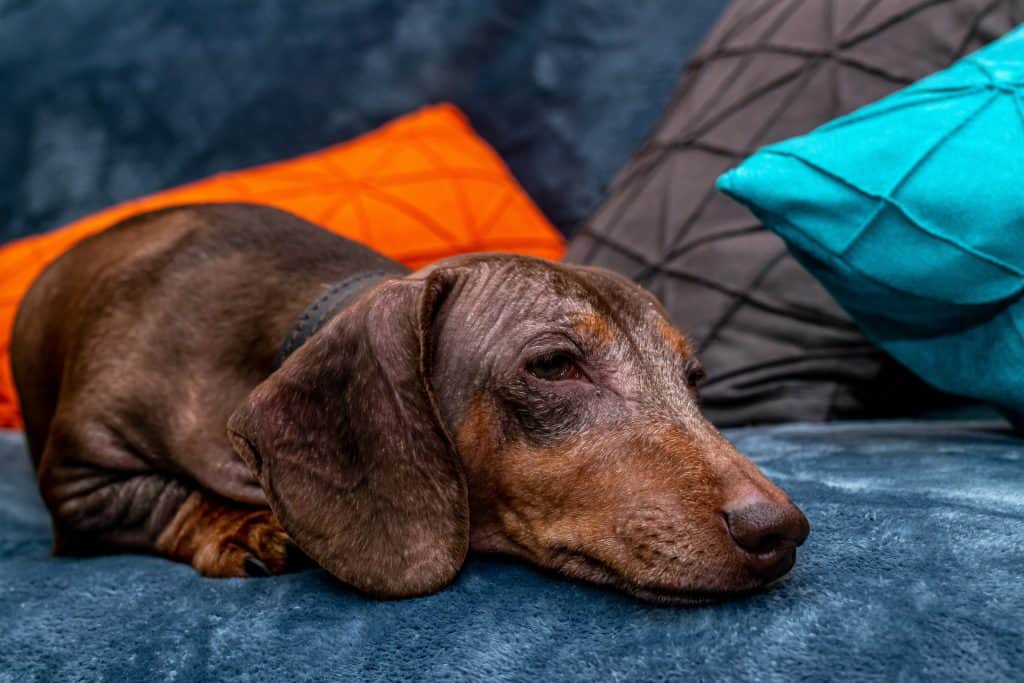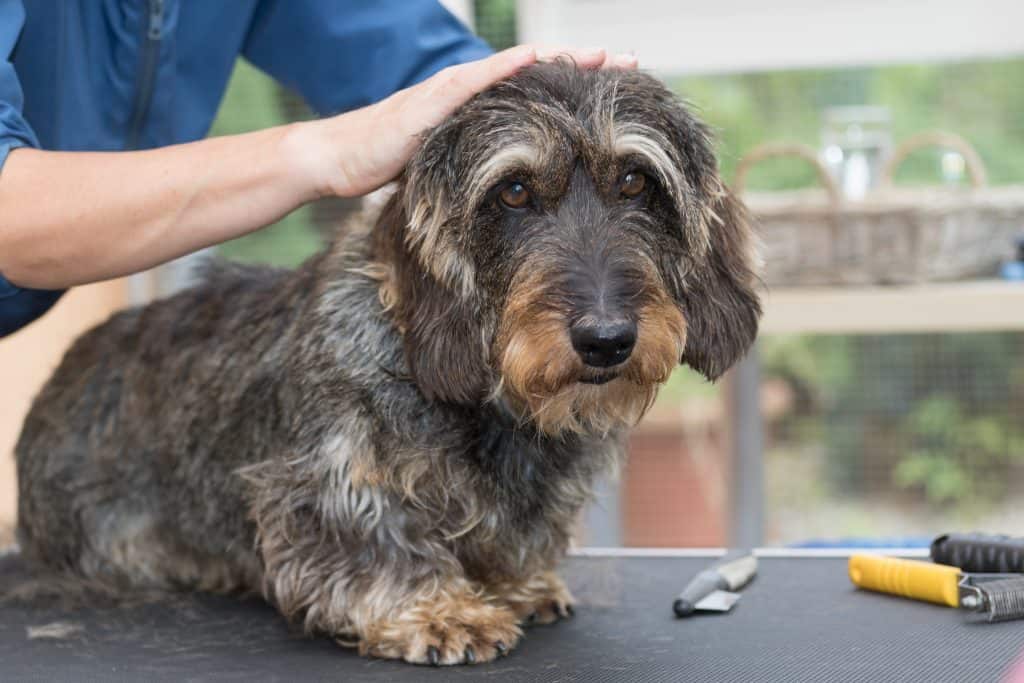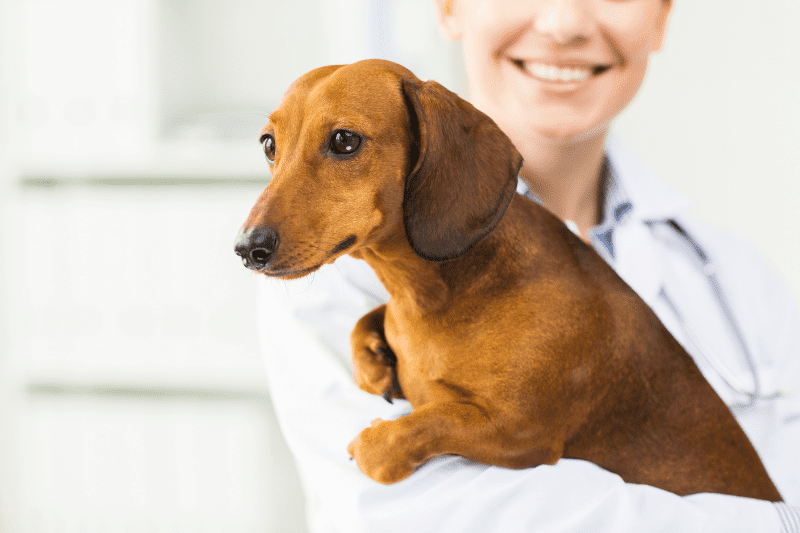Hair loss, also known as alopecia, is a common problem in dachshunds and can be caused by various factors. It is characterized by the partial or complete loss of hair in different parts of the body and can affect dachshunds of any age, breed, or gender.
If you are a Dachshund owner, this article is for you. Here, we will dive deep into the possible sources of your pup’s hair loss, such as allergies, parasites, or genetic issues. Additionally, we will be looking at the signs that indicate it is time to take them to see their vet and get checked out.

Why do dachshunds have bald spots?
Causes of bald spots in dachshunds can vary from allergies to hormonal imbalances to parasites. If you notice any hair loss in your dachshund, it is essential to seek veterinary care for a diagnosis and an appropriate treatment plan. Early intervention can help prevent the condition from worsening and help your dachshund to recover more quickly.
Trauma or injury
Trauma or injury to the skin can lead to bald spots in Dachshunds. If your Dachshund has sustained an injury, it is important to keep the wound clean and monitor for signs of infection.
Hormonal imbalances
Hormonal imbalances can also cause bald spots in dachshunds; an endocrine disorder, such as hypothyroidism or Cushing’s disease, may be responsible. If you suspect a hormonal imbalance, it is important to consult your veterinarian for diagnosis and treatment.
Parasites
Parasites, such as fleas, ticks, or mange mites, can cause bald spots in dachshunds. Treatment may include medicated shampoos or ointments to help reduce the infestation.
Fungal or bacterial infections
Fungal or bacterial infections can also cause bald spots in dachshunds, as they can damage the hair follicles and lead to hair loss.
If your dachshund has bald spots, your veterinarian may recommend diagnostic tests to determine the underlying cause. Treatment options may include medication, topical treatments, or, in some cases, surgery.

Dachshund Alopecia Treatment
The treatment options for dachshund alopecia depend on the underlying cause of the condition. Treatments may include medications, topical treatments, dietary changes, or environmental control measures.
Your veterinarian can help develop a personalized treatment plan for your Dachshund based on its individual needs and the underlying cause of its hair loss.
While some forms of alopecia can be avoided, others are out of our control. If the hair loss is caused by genetics or an underlying autoimmune disorder, there is no way to prevent it from happening.
To treat alopecia and prevent it from reoccurring, a plethora of pharmaceuticals are available. This arsenal consists of antibiotics, antihistamines, antifungals, and steroids. Your veterinarian will determine the most effective treatment for your pet’s health.
Follow-up care is important to ensure that your dachshund’s hair loss is effectively managed and to monitor for any potential complications. Regular veterinary check-ups and communication with your veterinarian can help to ensure the best possible outcome for your dachshund.

Conclusion
In summary, hair loss in dachshunds is a common problem that can be caused by various factors, such as allergies, parasites, hormonal imbalances, genetics, trauma or injury, and fungal or bacterial infections. It is important to identify the cause of hair loss to provide effective treatment.
If you notice your dachshund experiencing hair loss or bald spots, it is important to seek veterinary care to determine the underlying cause and appropriate treatment. In addition to medical treatment, regular grooming, environmental control, stress management, and a healthy diet with supplements can help promote hair growth and overall health for your dachshund.
If you are concerned about your dachshund’s hair loss or bald spots, schedule an appointment with your veterinarian today. With proper diagnosis and treatment, your dachshund can enjoy a full and healthy coat of fur.
Related post: Understanding Dachshund Allergies
Recent Posts
Calculate the perfect food portions for your dachshund with our specialized calculator. Get customized feeding recommendations based on size, age, and activity level to support your wiener dog's back...
Looking for the perfect gift for a proud dachshund mom? We’ve rounded up the cutest dachshund shirts that celebrate your love for wiener dogs in style. Whether you’re shopping for yourself or a...


